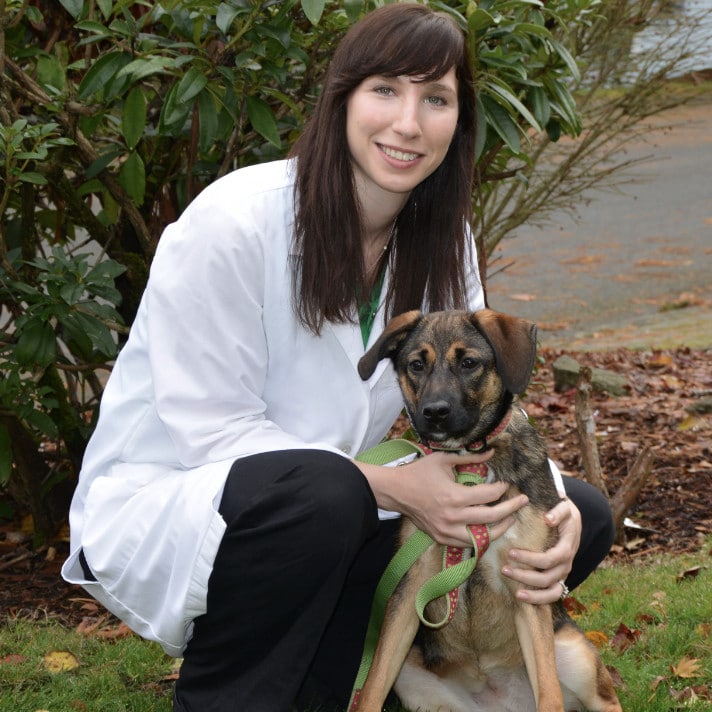Table of Contents
Signs of Aging in Our Pets
There’s no exact age when a pet is considered a senior. However, many vets make this distinction when a pet enters the last 25% of their expected lifespan. The following can be used as a general guideline:
- Cats: 10 years
- Small dogs (less than 20 lbs): 8-11 years
- Medium dogs (20-50 lbs): 8-10 years
- Large dogs (50-90 lbs): 8-9 years
- Giant dogs (over 90 lbs): 6-7 years
Aging in pets, much like in humans, comes with a variety of changes. Physically, signs such as greying fur, lessened mobility, and perhaps a more sedate pace are common. Behaviorally, these changes can manifest as increased amounts of sleep, a decrease in active play, or even signs of disorientation or confusion. Age is not a disease, however, certain disease processes are more common in senior pets. Your senior may be dealing with decreased hearing or vision, incontinence, arthritis, dental disease, cognitive dysfunction, cancer, or other health problems.
Caring for a Senior Pet
As pets age, their care requirements change. Adapting to these changes is crucial for ensuring their comfort and health. Some key areas to focus on are discussed below.
Nutrition
- Diet: Senior dogs often require diets that are lower in calories but higher in fiber, with sufficient, easily digestible protein and essential nutrients to maintain muscle mass, an ideal body condition, and support overall health. Senior cats need a highly palatable, calorie-dense diet containing increased amounts of easily digestible protein. Before switching your pet to a senior diet, always ask your vet! While some senior pets can benefit from a diet change, it may not be necessary for others.
- Supplements: Consider adding supplements like glucosamine for joint health or omega fatty acids for coat and brain health, but always consult with your vet first.
- Feeding schedule: Maintaining a regular feeding schedule helps manage weight and provides consistent nutrient intake. Senior cats may need to eat smaller amounts more frequently.
- Hydration: Always make sure that there is fresh water available and easily accessible for your senior pet. This is especially critical for older cats who may have some degree of chronic kidney disease.
Physical and Mental Stimulation
- Gentle activity: Regular, gentle exercise helps maintain a healthy weight and mobility. Short walks or light play sessions are beneficial. Low-impact exercise like swimming or walking on soft surfaces can also be easier on aging joints.
- Cognitive exercises: Engage your pet in activities that stimulate their mind, like puzzle feeders or new, gentle training exercises.
- Social interaction: Continue to provide social interaction and affection to keep them mentally stimulated and emotionally supported.
Making Your Home More Accessible
- Ramps and steps: Install ramps or steps to help your pet access higher areas like beds or couches without jumping. Senior cats especially enjoy elevated perches but may appreciate a step stool to help them get up.
- Non-slip surfaces: Place rugs or mats on slippery floors to prevent falls.
- Comfortable resting areas: Provide orthopedic beds or padded sleeping areas in easily accessible places.
- Easy access to resources: Make sure that resources (including food and water bowls, resting spots, and litter boxes) are easily accessible. If your home has multiple floors, it can be helpful to have these resources available on each floor. Additionally, senior cats may have trouble climbing into a litter box with high sides.
- Environmental consistency: Maintain a consistent environment and routine to help pets with cognitive changes or decreased vision feel more secure.
Increased Veterinary Care
- Regular check-ups: Increase the frequency of veterinary visits for early detection and management of age-related health issues. Most healthy seniors should see the vet every six months.
- Dental care: Regular dental check-ups and cleanings become even more important as pets age.
- Bloodwork and screening tests: Routine bloodwork and other diagnostic tests can help monitor organ function and detect diseases early when they may be easier and more cost-effective to treat.
- Vaccines and parasite prevention: Continue to follow your vet’s recommendations to keep your senior pet free of infectious diseases and parasites.
Pain Management
- Arthritis is extremely common: Studies have shown that arthritis pain is present in 20% of dogs and 40-90% of cats.
- Regular assessments: Watch for signs of discomfort or pain, limping, vocalizing, changes in activity or appetite, altered breathing, grooming excessively or not at all, changes in sleeping patterns, and avoidance of social interaction or touch.
- Veterinary interventions: Work with your vet to identify and manage pain, which may include medications, physical therapy, or alternative treatments like acupuncture. Now more than ever there are numerous safer options to help relieve pain in our furry family members.
- Never give your pet human or over-the-counter medications: Never give these medications without consulting your vet; they can be harmful and, in some cases, toxic.
Quality of Life
While we wish our furry family members could live forever, one of the most crucial and difficult aspects of caring for a senior pet is assessing and maintaining their quality of life. This not only involves medical care but also ensuring their day-to-day life is comfortable, engaging, and adapted to their changing needs. Decisions about end-of-life care are some of the hardest but most important considerations, and your vet is there to help.
Navigating the senior years with a pet can be challenging. It’s normal to feel a range of emotions, from sadness at the changes in your pet’s abilities to gratitude for the years of companionship. Seeking emotional support, whether through pet owner support groups, online forums, or professional counseling, can be invaluable.
When to See the Vet
If you notice any concerning signs or changes in your senior pet’s behavior, mobility, appetite, or overall condition, it’s important to consult with your veterinarian. They can help determine if these changes are part of the normal aging process or indicative of underlying health issues that need to be addressed. Early detection and intervention are key to managing health issues and maintaining your pet’s quality of life during their senior years. See the vet if you notice the following:
- Sudden aggression or disorientation: Uncharacteristic aggression, confusion, or disorientation in familiar settings.
- Significant mobility issues: Difficulty standing or walking, limping, reluctance to move, or vocalizing in pain.
- Changes in eating or drinking
- Abnormal bodily functions: Incontinence, severe constipation or diarrhea, blood in urine or stool, vomiting.
- Drastic loss of hearing or vision
- Respiratory distress: Labored breathing, persistent cough, any signs of breathing difficulty.
- Skin and coat problems: Excessive itching, bald patches, foul skin odor, significant changes in coat quality.
- Altered mental state: Persistent hiding, lack of interest in surroundings, signs of depression, or drastic changes in sleep patterns.
- Unresolved pain
FAQ
While this varies between pets, a general rule is that a pet is considered a senior when they enter the last 25% of their expected lifespan. For cats, this is usually 10 years, and for dogs, it can range from 6 to 11 years depending on size and breed.
Aging pets may show signs of decreased mobility, increased sleep, changes in appetite, greying fur, reduced playfulness, decline in hearing and vision, and other cognitive changes.
Age is not a disease, however, senior pets are more prone to medical conditions such as dental disease, arthritis, kidney disease, and cancer.

Liza is a veterinarian who graduated from MSU CVM in 2013 and spent five years working in small animal practice. She loved working with dogs and cats and educating owners on all aspects of veterinary medicine, especially animal behavior and dermatology. She has since transitioned to remote work to be able to spend more time at home with her husband, two young kids, and two cats. She is thrilled to be able to combine her passions for veterinary medicine and writing. She is licensed as a veterinarian in Washington State.








